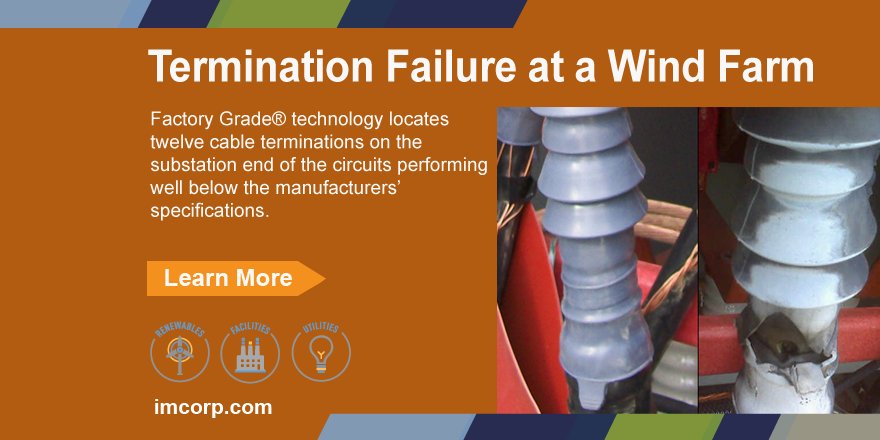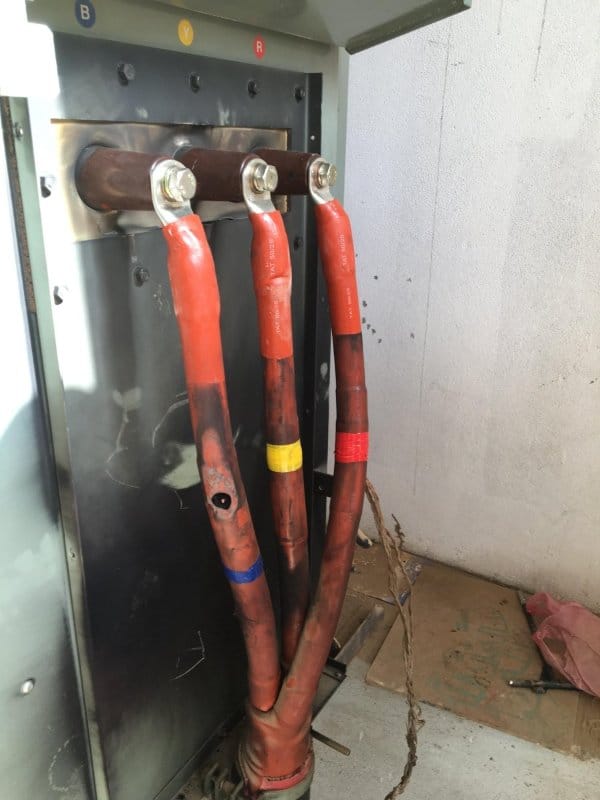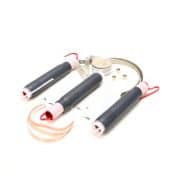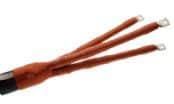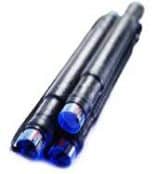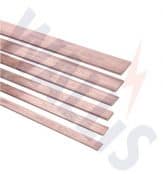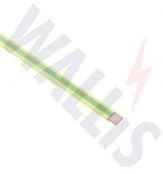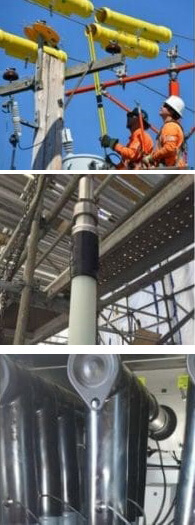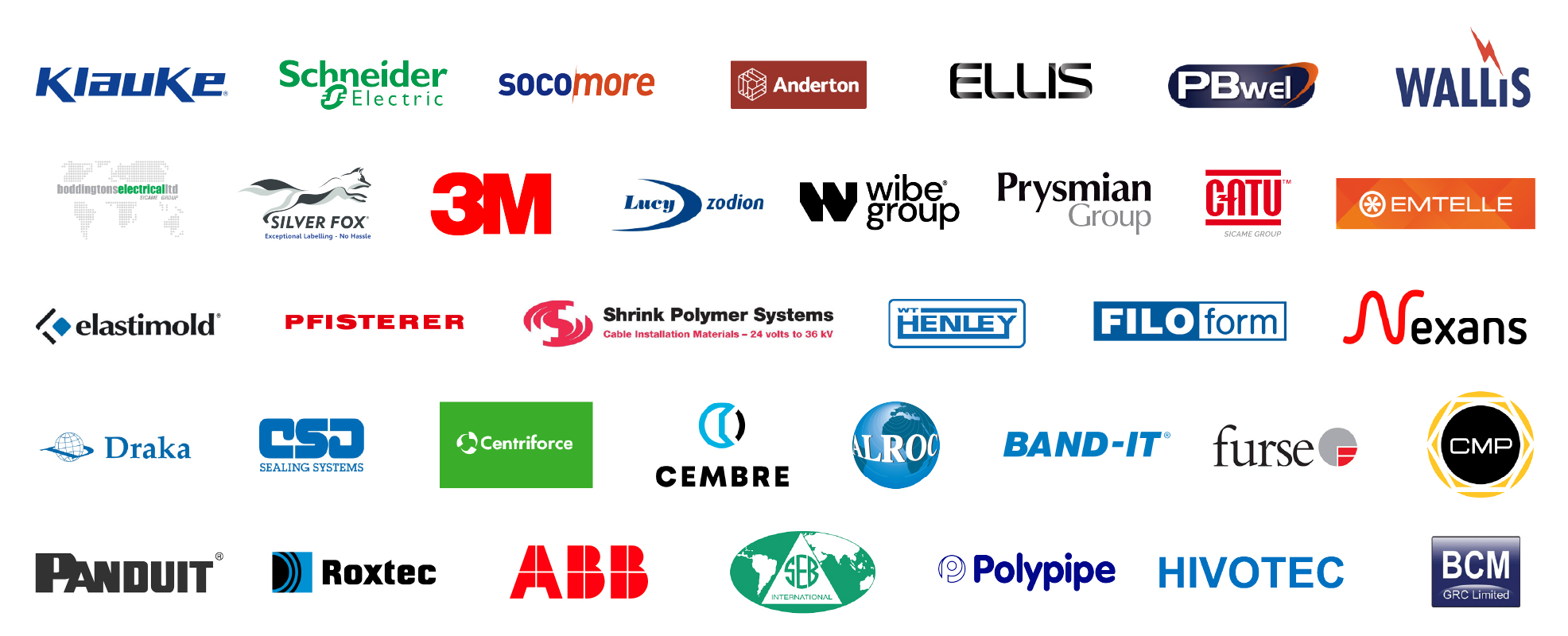MV Heat Shrink Cable Terminations Can Fail Despite Passing VLF Tests
Published 08 Nov 2017

IMCORP – Providers of Factory Grade® technology, bringing MV HV power cable and accessory manufacturers’ QC reliability to field installations worldwide.
by Chris Dodds T&D - estimated reading time 5 minutes
OVERVIEW
0.1 Hz VLF test and IMCORP’s Factory Grade® technology are compared side-by-side at utility solar site
CHALLENGE
VLF test passes cables, but cable terminations were still failing
RESULTS
Based on distribution system experience, utility uses IMCORP’s Factory Grade® technology to identify workmanship defects and VLF test induced damage
A utility client of IMCORP asked them to commission medium voltage cable systems at a new generation facility after experiencing several MV 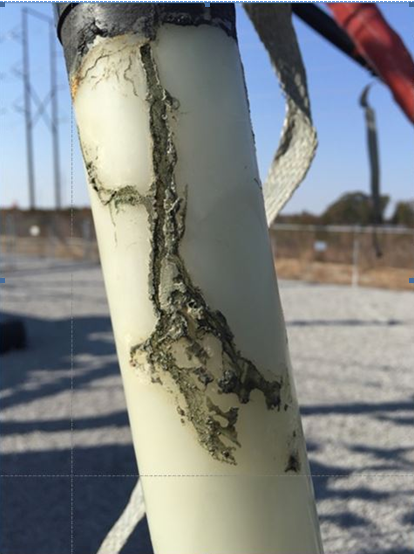
The cable installation contractor had already tested the MV cable systems with a very low frequency (VLF) test.
Uninformed contractors often make a claim based on a common myth that ‘proper’ VLF testing would detect serious MV-HV cable defects while not harming healthy cable insulation or aggravating minor defects.
In addition, the misguided claim often states that passing a VLF test means the medium or high voltage cable system will deliver years of trouble free service.
Wrong.
Unfortunately the owner initially believed these commonly held myths, energised the MV power system and subsequently experienced several catastrophic failures that damaged switchgear, costing them significant down time and losses in generation revenue.
Substandard MV HV cable jointing and installation necessitated the replacement of multiple HV heat shrink cable terminations after a succession of in-service cable termination failures.
Pictured opposite the heat shrink anti-track tubing has been removed shown the tracking between the medium voltage heat shrink and XLPE cable insulation.
The IMCORP Factory Grade® technology pinpointed dozens of MV cable terminations that did not meet the accessory manufacturer’s minimum performance standards.
When the cable terminations were dissected the technician not only found cable jointer workmanship issues, including insufficient shrinkage of heat shrink layers, but clear evidence of damage caused by the VLF test that passed the medium voltage cable terminations a short time before.
Ben Lanz (Director, Applications Engineering at IMCORP) comments, “a VLF test passed this heat shrink termination. An offline 1.5Uo 50/60Hz PD partial discharge assessment with 5pC sensitivity identified this MV cable termination which is why we have the picture. The original installation defect and VLF test damage are plainly visible. This case along with many others is the reason IMCORP recommend a factory comparable PD test for critical medium/high voltage power installations and QC spot checks for newly trained cable jointers and installers of MV-HV joints, terminations and connectors. I acknowledge that a VLF test was the best the utility and power industry had 10 years ago but with the evidence we have now, I generally don’t recommend going over the operating voltage with a VLF test since it can not find most MV-HV cable detects found by a factory comparable PD test.”
The 2 most serious cable termination anomalies were small voids on the medium voltage XLPE cable insulation shield interface and “fall-in” cable insulation problem at the conductor shield interface.
Could a failure to remove the semicon screen from the XLPE insulation of MV-HV cables contribute to this type of cable failure?
Here, the semicon screen was removed sufficiently from the MV-HV cable using correct cable jointing tools. Most likely the VLF test burned a track in voids caused by insufficient void filling mastic at the semicon cutback and/or insufficient shrinking of the heat shrink tube with the green zinc oxide (ZnO) stress controlling layer on the inside of the cable termination.
MV Cable Termination Failures
Here, failure of the heat shrink stress control component of the cable termination was poorly placed in relation to the semi-conductor screen cut causing termination failure of the substation cables linked to a generation plant on an onshore windfarm.
Manufacturers Standards
| Component Standard | Testing Frequency | Sensitivity | Voltage |
| Cable Terminations IEEE 48 | 50/60 Hz | 5pC | < 1.5 Uo |
| Cable Joints IEEE 404 | 50/60 Hz | 5pC | < 1.5 Uo |
| Separable Connectors IEEE 386 | 50/60 Hz | 5pC | < 1.3 Uo |
| MV Extruded Cable ICEA S-97/94-682/649 | 50/60 Hz | 5pC | < 4.0 Uo |
| HV EHV Extruded Cable ICEA S-108-720 | 50/60 Hz | 5pC | < 2.0 Uo |
Reducing Cable Termination Failures
Of course site standards and international working procedures vary but the following professional advice has universal methodology:
“There are three main components to reducing the risk of failure during the infant mortality phase of an installation’s life (bathtub curve): 1) Have policies that ensure you only procure high quality equipment 2) Ensure that equipment is installed by qualified, trained and experienced personnel who work to high standards 3) Commission it thoroughly with a view to exposing flaws and weaknesses and then correcting them. As has been proven many times before, thousands saved today may cost you millions tomorrow.”
Jason St Martin (Senior Electrical Inspector at DMIRS Building and Energy State of Western Australia)
Thorne & Derrick International
Cable Installation, Jointing, Substation & Electrical Equipment Distributors
Since 1985 T&D have serviced UK and international businesses involved in cable installations, earthing, duct sealing, jointing, substation, overhead line and electrical construction at LV, MV & HV.
Our customers are contractors, specifiers and end-users involved in cable installations, cable jointing, substation, overhead line and electrical construction at LV, MV & HV.
Medium voltage power cables can fail for several reasons – pictured below is a common installation error near the outer semicon screen cutback by the cable jointer on the heat shrink cable termination – the highest electrical stress point in an open air cable termination.
To prevent this IMCORP recommend MV HV Jointer Training coupled with a factory comparable partial discharge test after installation to provide feedback to the cable installer – 50/60Hz offline PD test with better than 5pC sensitivity.
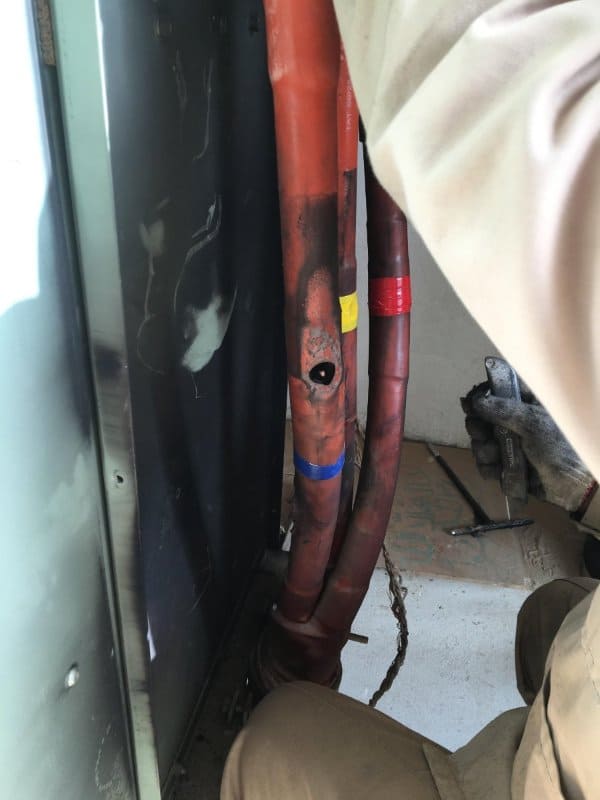
Partial Discharge (PD) at the crossed cores of the HV cable causing failure of the heat shrink cable termination


